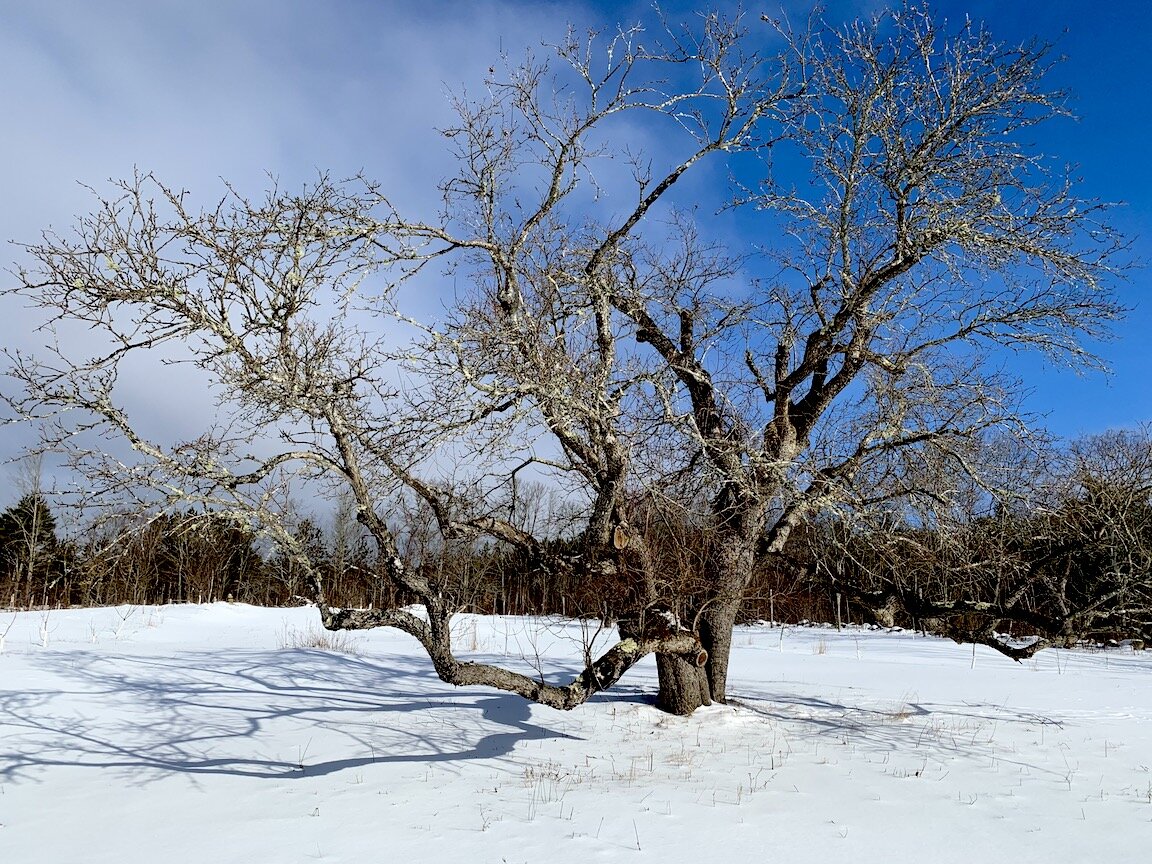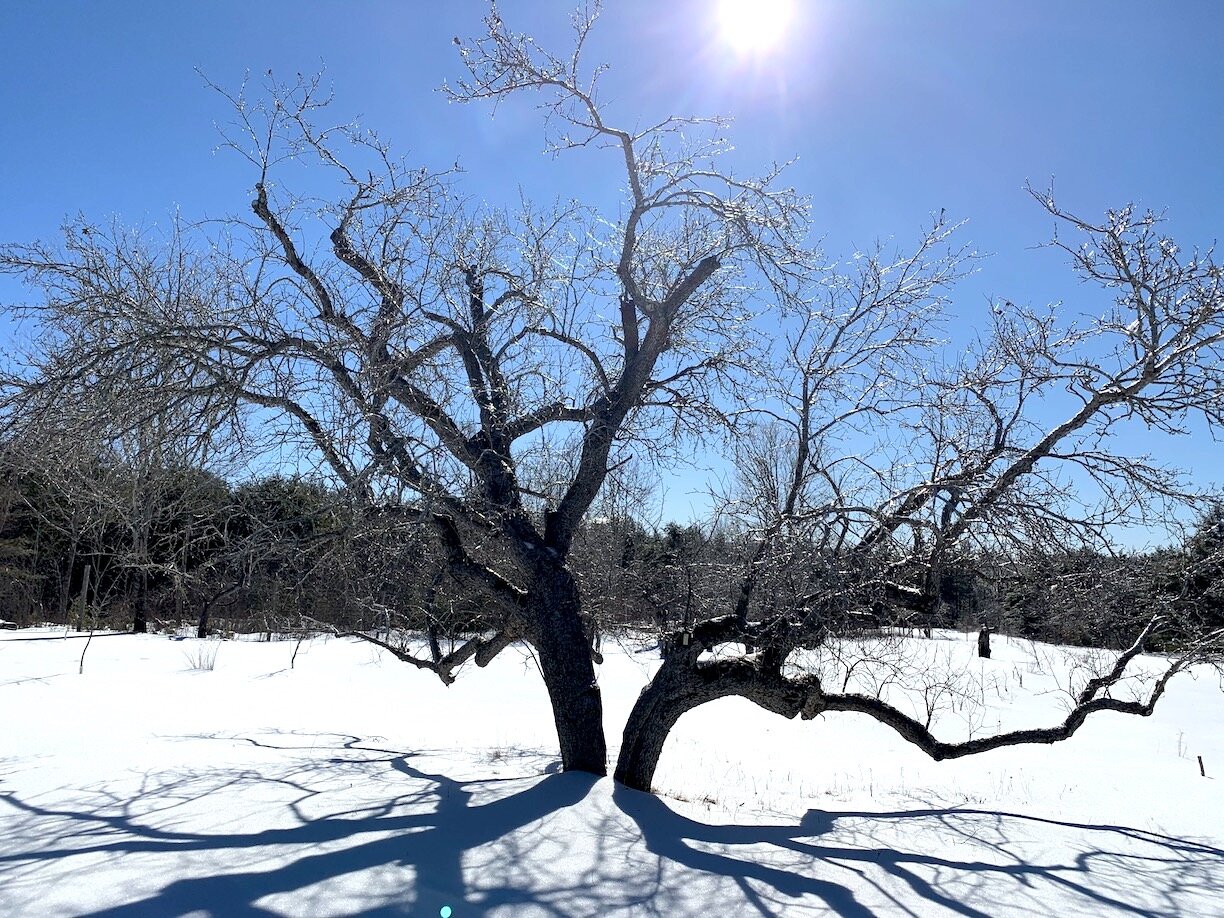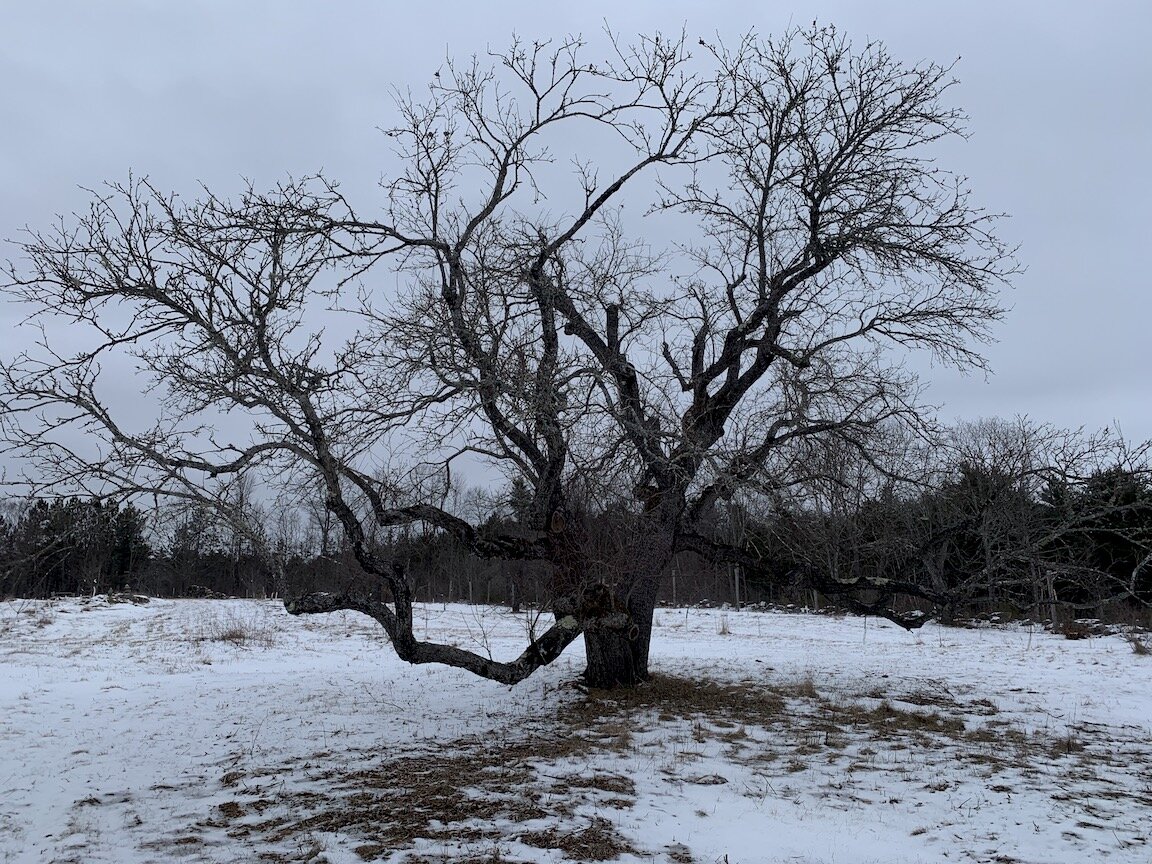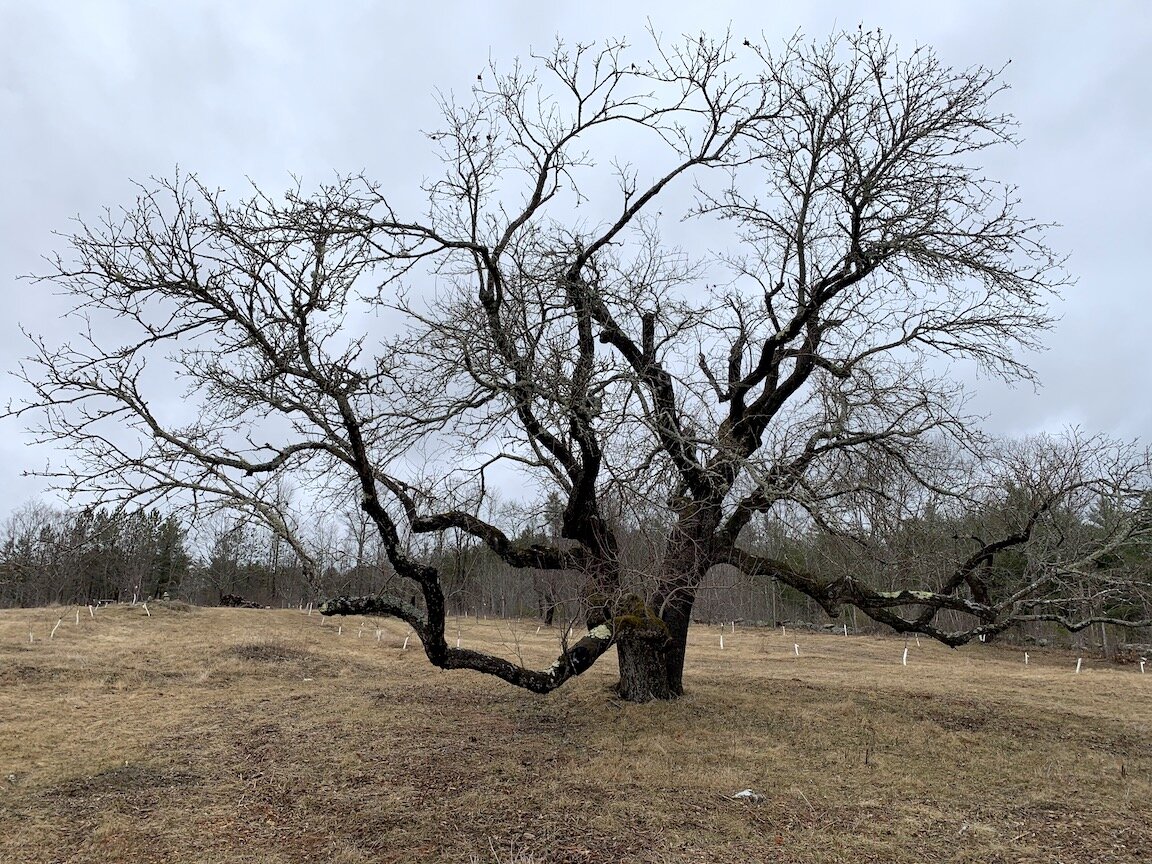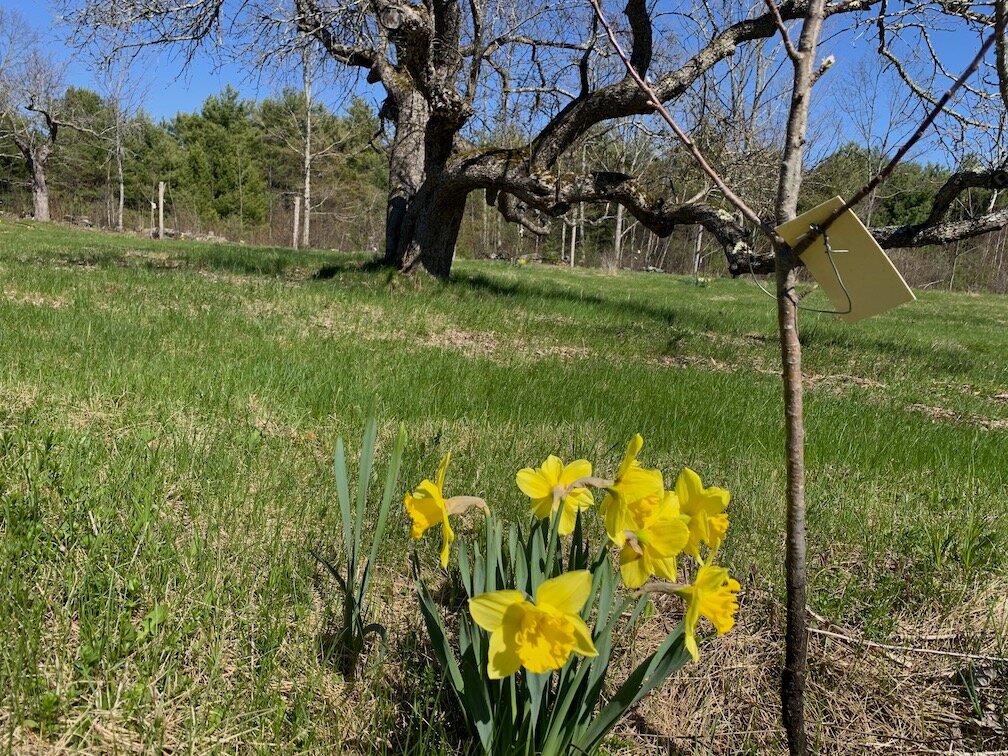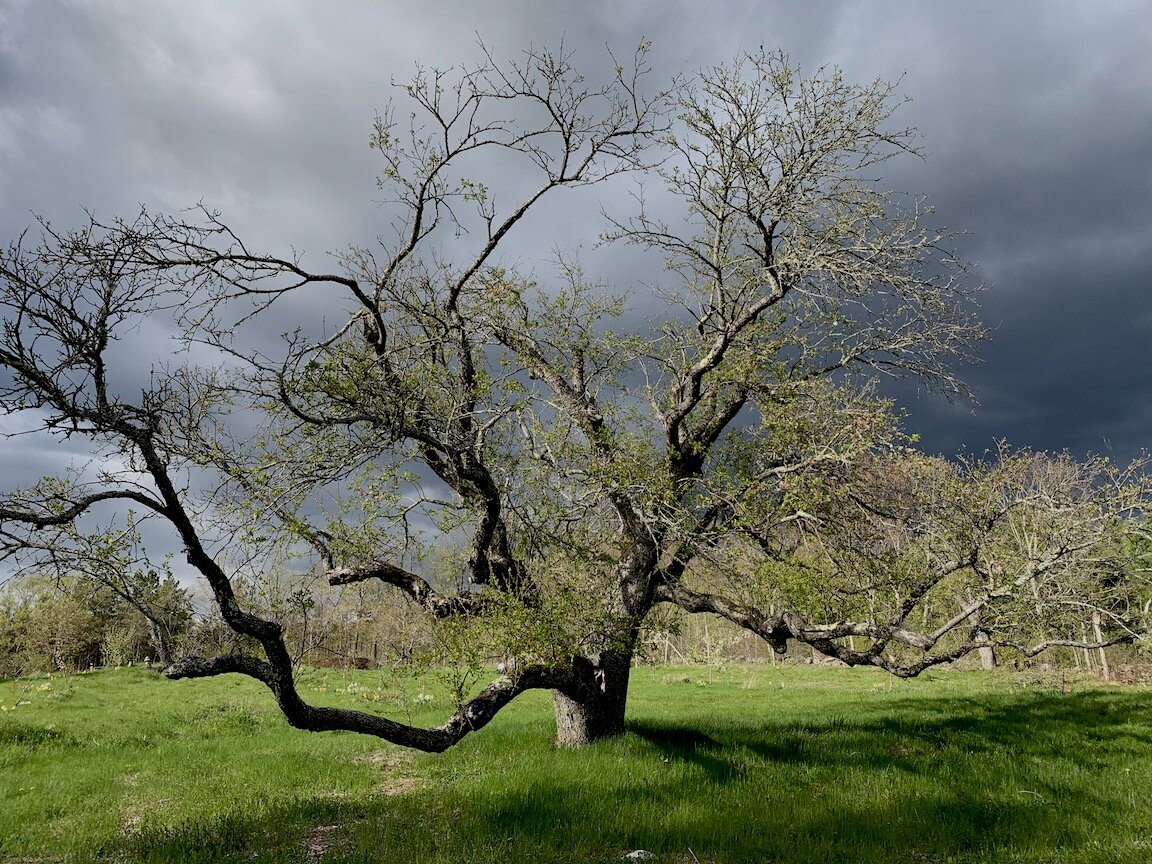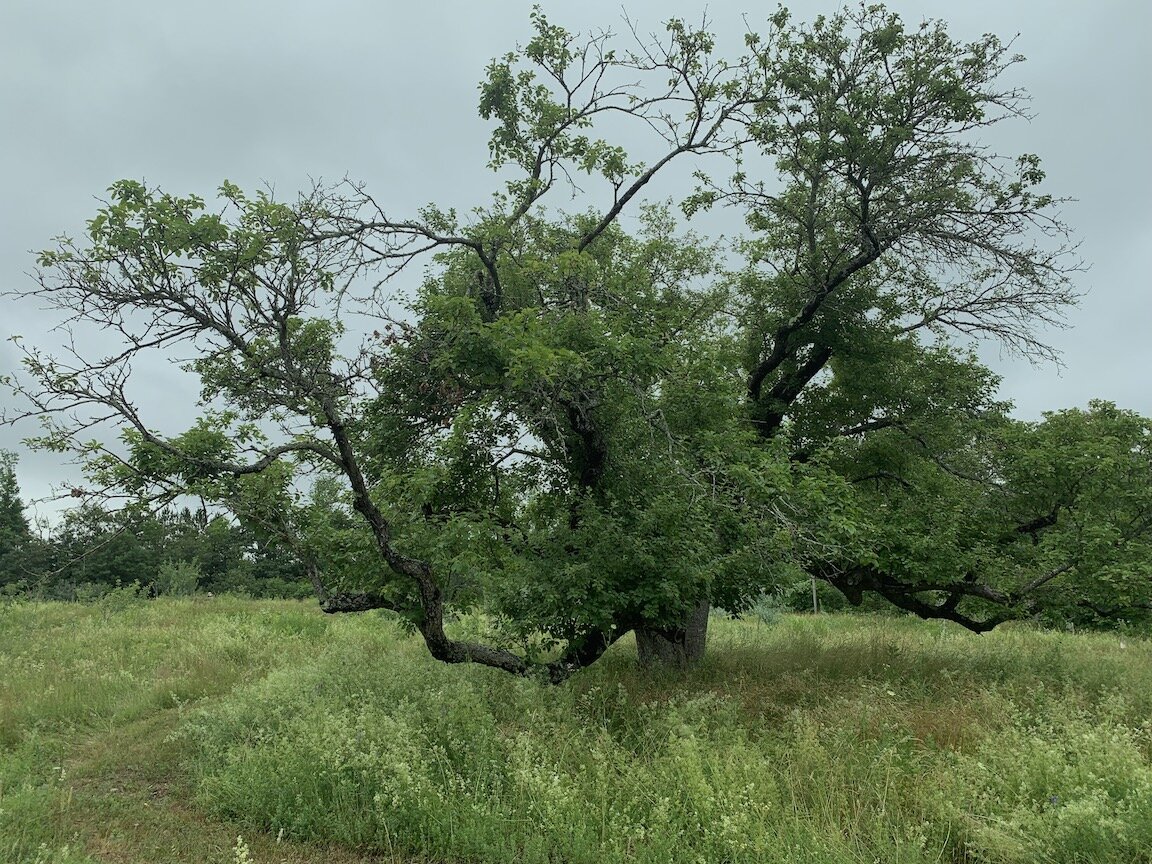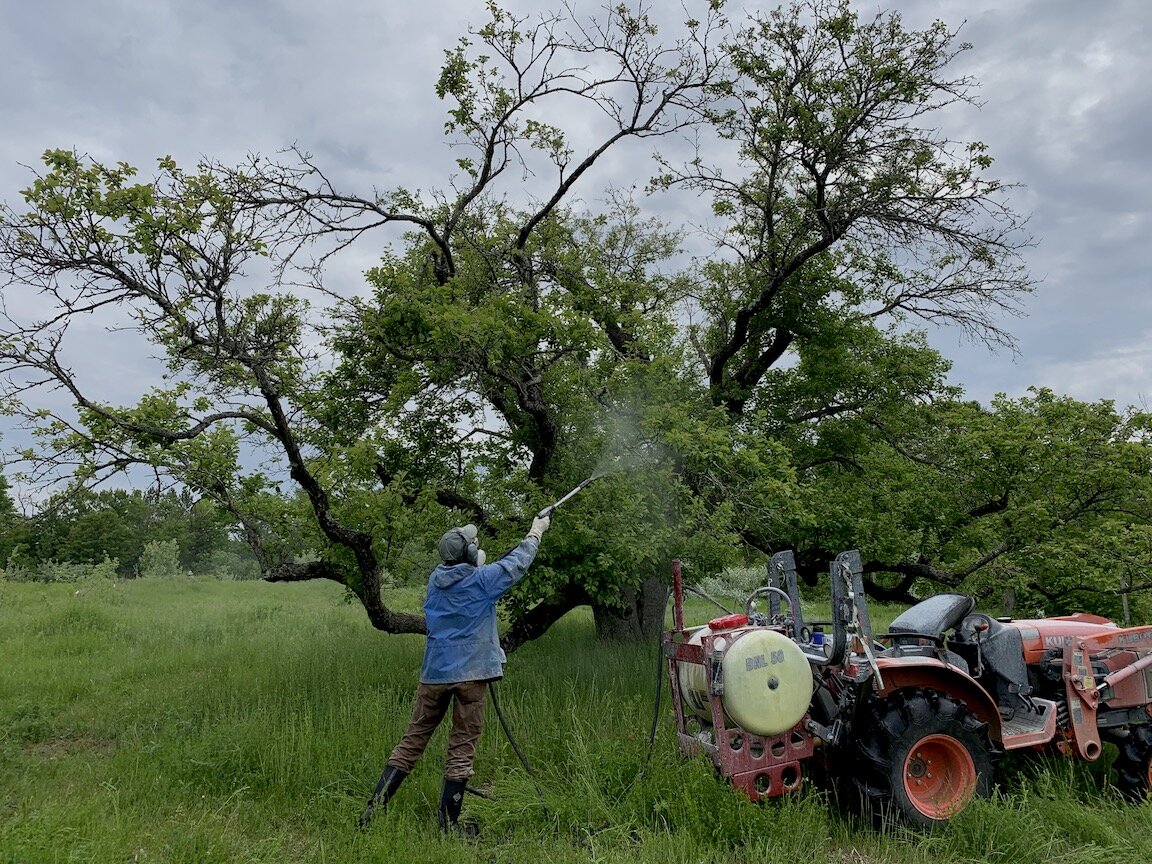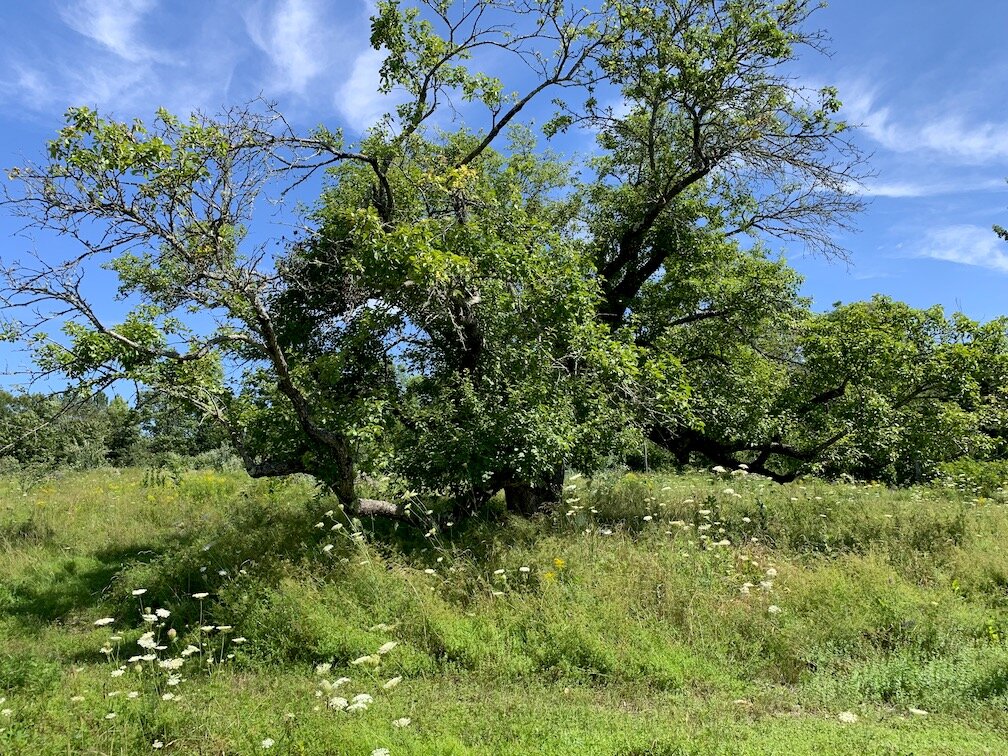Welcome to Apple Season.
It’s been a tough year to be an apple tree. The challenges started back in January with the winter that wasn’t. As Robert Frost once warned, “Dread fifty above more than fifty below”. Apple trees like it cold and don’t enjoy winter temperature swings from arctic to tropical. We spent the winter cutting browntail moth nests from our apple trees so the leaves would not be devoured by the growing larvae come May. Mud season came a month too early in 2021 tempting the apples to break dormancy and bloom prematurely. Somehow they resisted until the danger of frost had passed. We were thrilled with the abundant bloom - even trees that had never flowered put on a show, but many of them shed their tiny fruit before they could develop when a drought engulfed central Maine. Every day orchardists and farmers patiently petitioned the rain gods for a shower or two, but the one proper downpour we had in June brought with it the dreaded bacterial Fire Blight to infect the trees. If there were a vaccine for Fire Blight we would sign up our trees for a jab, but alas that is not a national priority. Instead we grieve as we cut out dead branch after dead branch. The rains returned in July, not as the gentle showers we longed for but as torrential downpours that knocked off apples and flattened our sunflowers as they were starting to bloom. And still it rains. Apples once desperately in need of a drink are now huge, dripping with juice and tumbling off the trees. Imagine us dashing from tree to tree with out stretched arms trying to catch each precious orb as it drops.
While we complain about the crazy weather to anyone within earshot, the trees silently stand and withstand all that Nature and humans throw their way. From sunshine, water and our exhales they have produced an abundant crop despite conditions that could have lured them to different outcomes. So let’s spend this apple season celebrating the resilience and the brilliance of the apple trees. No matter the year, we love sharing our small spot on this planet with them, and we are happy to have an opportunity to share the fruits of the season with you.
Picks of the week:
(Click each variety for more info)
At the beginning of every season we like to give a little pep talk to our first time shareholders about what to expect this season. Our goal is to introduce you to the wealth of apples available to us in Maine. Many of the apples will be old varieties passed down to us from grafters long ago. Others will be unusual modern varieties created in university breeding programs. In your share bags you will find apples in colors from translucent yellow to dark purple and everything in between; they may feel like suede on the outside or be smooth and greasy; they may be as small as a cherry or as large as a grapefruit; some will be pointy, others ribbed or shaped like a donut; when you bite into them you will think of sugar cane, grass, cherry life savers, caramel or roses. There is no doubt that you will swoon when you taste some and consider others to be “spitters”. If you don’t like them when you bite in, try cooking with them. Not all apples were meant for fresh eating.
The varieties and number of apples in your share will depend on the crop this season. These will not be the apples they sell at Hannafords or at most farm stands. Sometimes you will find only one apple in a bag because that is all we have and we want to give you a taste - so be prepared to share. Finally, if you love an apple and hope that we will send you more of them the following week, you will be disappointed. We try to create a new apple adventure for you in each delivery.
This week the apples can be grouped into three categories: pies, sauce and fresh eating. Of course we encourage you to taste everything fresh and to experiment with different ways to prepare them, but to start you off on how to approach the apples in your share bag, here are our suggestions.
Duchess and Red Gravenstein are tried and true pie apples. Duchess, a Russian ex-pat, should really be called Queen in northern Maine where is thrives in the cold winters and has established fields of seedlings in every open space it can find. Gravenstein, an immigrant from Germany, maybe the only apple we know that invaded the US on both coasts. Home cooks have been using these tart apples for pies for centuries, and we think they clearly knew what they were doing.
The two beauties, Milton and St. Lawrence, can be considered all-purpose apples - you can eat them fresh, bake with them, or make them into a smooth, tart, yellow sauce. Pair them with a slice of cheese or add them to a salad with bitter greens. Or just leave them on your counter to admire - those diagnostic St. Lawrence stripes take our breath away each fall.
Zestar and Garden Royal are apples best eaten out of hand. Zestar, the more modern of the two, glows like a neon beacon on the trees - suggesting a color created in a NJ chem lab, not by Mother Nature. The taste is zippy and fresh and reminiscent of the aftertaste of a sourball. There are hints of honey in the airy flesh. Lydia P. described a bite of Zestar like a bite of a cloud at the Willy Wonka factory. The flavor of the MA heirloom, Garden Royal, is more delicate and subtle like a flower garden in the fog - lots of complexity but the edges are softened.
Oh yes, we almost forgot. There is a mystery apple in your Garden Royal bag. It is the diminutive Centennial Crab. We’ll let it speak for itself.
Our apples come to you straight from the tree, so, as with all fresh produce, please be sure to wash them thoroughly before eating. Some of the apples are grown using Integrated Pest Management by the orchards we collaborate with throughout Maine, and some are organically grown here on Super Chilly Farm.
Duchess, Garden Royal, Milton, Red Gravenstein, St. Lawrence and Zestar waiting to be packed in your share bags. Oh, don’t forget the Centennial Crabapple.
Two Lydias picking zippy Zestars.
Recipe of the Week
This recipe comes from the NY Times. I intended to try the recommended pastry recipe until I read it. It is a yeasted recipe that required kneading, rising, punching, rising, rolling, resting, rolling and keeping track of time - not at all something I was inclined towards while trying to pack apples over in the barn. So I pulled out another, slightly sweeter, pastry recipe that could be made in a jiffy and stuck in the fridge to chill for an indefinite amount of time. It worked just fine though I have included a link to the original in case you have some time on your hands. This galette worked well with the Gravenstiens - it’s not too sweet but the caramelized apples add a richer flavor than usually found in pies and tarts.
Apple-Walnut Galette
Ingredients:
Our biggest competitors for the ripe apples this fall aren’t porcupines or deer - they’re yellow jackets.
1 dessert galette pastry (1/2 recipe)
juice of 1/2 a lemon
2 pounds slightly tart apples, like Gravenstein or Duchess,
cored and cut in wedges (about 1/2 inch thick at the thickest point)2 TBS unsalted butter
¼ cup plus 1 TBS dark brown sugar or turbinado sugar
1 tsp vanilla extract
¼ cup lightly toasted walnuts, chopped
¾ tsp cinnamon
¼ tsp grated nutmeg
¼ cup almond flour
1 egg beaten with 1 tsp milk, for egg wash
Directions:
1. Line 2 sheet pans with parchment. In a large bowl combine the lemon juice and apples, and toss together.
2. Heat a large, heavy frying pan over high heat and add the butter. Wait until it becomes light brown and carefully add the apples and 1/4 cup of the sugar. (Unless you have a pan large enough to feed a logging camp, it works better to do this in two batches.) Do not add the apples until the pan and the butter are hot enough or they won’t sear properly and retain their juice. (WARNIING - Once you add the apples, turn the heat down to medium or watch carefully because the lovely caramelized apples can quickly become burnt apples.) When the apples are brown on one side, add the vanilla, 1/2 teaspoon of the cinnamon and the nutmeg, flip the apples and continue to sauté until golden brown, about 5 to 7 minutes. Stir in the walnuts, then scrape out onto one of the lined sheet pans and allow to cool completely.
3. Preheat the oven to 350 degrees.
4. Remove the pastry from the fridge and roll it out. Lay it on the other parchment-lined baking sheet.
5. Sprinkle the almond flour over the pastry, leaving a 2- to 3-inch border all around. Place the apples on top. Fold the edges of the dough in over the fruit, pleating the edges as you work your way around the fruit to form a free-form tart that is roughly 9 inches in diameter.
5. Brush the exposed edge of the pastry with the egg wash. Combine the remaining tablespoon of sugar and 1/4 teaspoon cinnamon and sprinkle over the fruit and the crust. Place in the oven and bake 1 hour, until the crust is nicely browned and the apples are sizzling. Remove from the oven and allow to cool for at least 15 minutes. Serve hot, warm or at room temperature.



